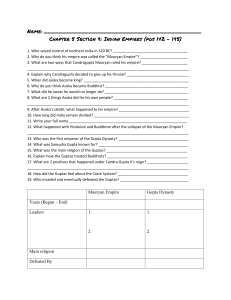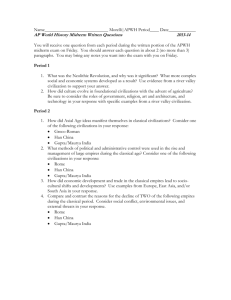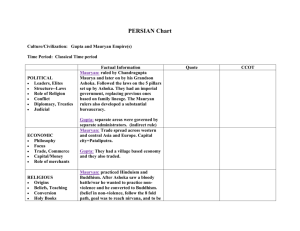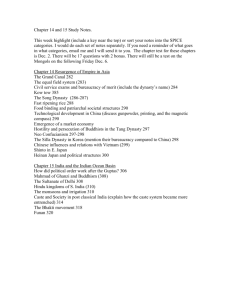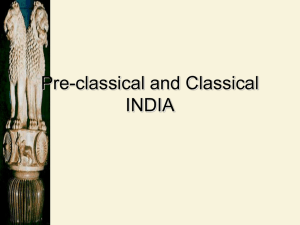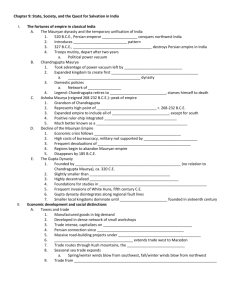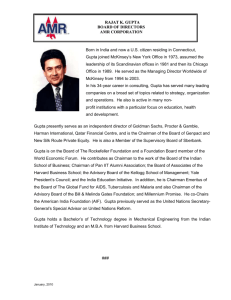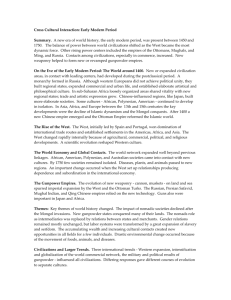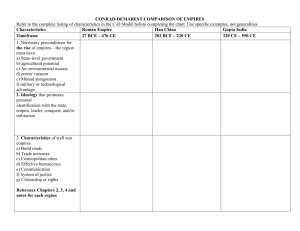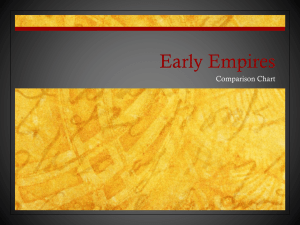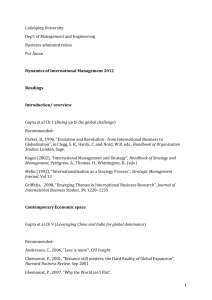1. This essay will compare and contrast the Mauryan and Gupta
advertisement
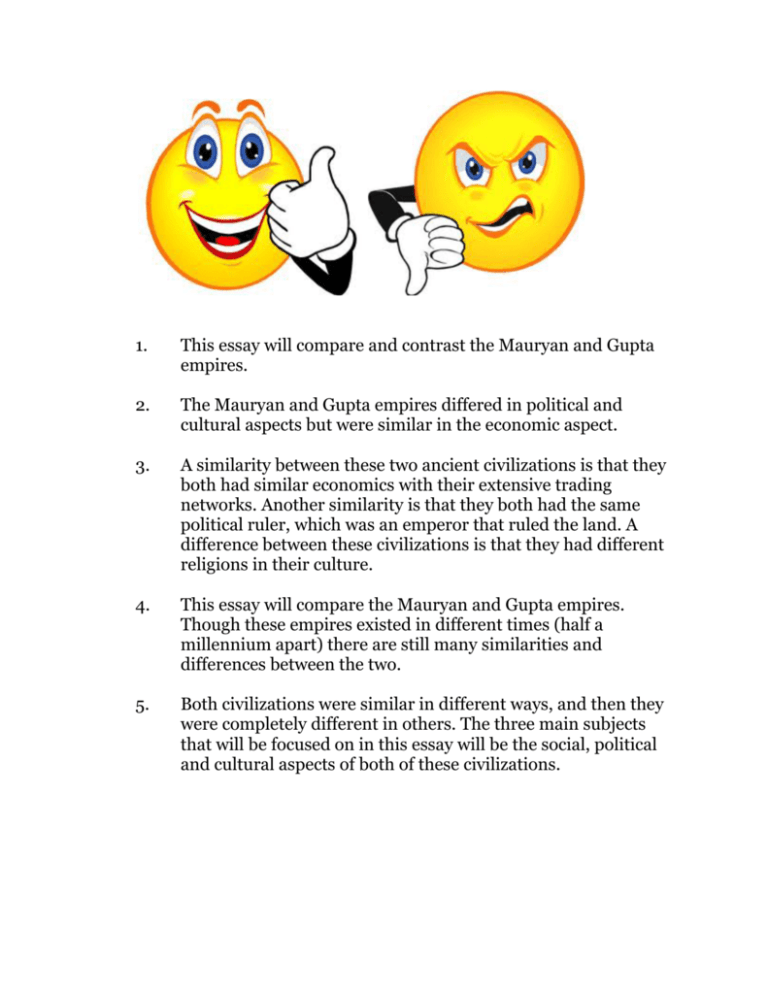
1. This essay will compare and contrast the Mauryan and Gupta empires. 2. The Mauryan and Gupta empires differed in political and cultural aspects but were similar in the economic aspect. 3. A similarity between these two ancient civilizations is that they both had similar economics with their extensive trading networks. Another similarity is that they both had the same political ruler, which was an emperor that ruled the land. A difference between these civilizations is that they had different religions in their culture. 4. This essay will compare the Mauryan and Gupta empires. Though these empires existed in different times (half a millennium apart) there are still many similarities and differences between the two. 5. Both civilizations were similar in different ways, and then they were completely different in others. The three main subjects that will be focused on in this essay will be the social, political and cultural aspects of both of these civilizations. Re-examine PowerPoint 7, slides 30-31 and 39-41 to formulate a thesis prong comparing the Mauryans and Guptas politically. Then skip a line, and write the substantiating evidence that supports that thesis point. This would be contained in a body paragraph. Political rule during the Mauryan Empire differed significantly compared to the later Gupta Dynasty. The Mauryans maintained a larger, more coercive bureaucracy, whereas the Guptas relied more on indirect forms of control, operating as a theater-state. • In contrast to the smaller Gupta Dynasty, the more centralized nature of the Mauryans helps to explain why it was able to rule over a much more geographically extensive part of the Indian subcontinent. The Mauryans had a bigger military, including infantry, cavalry, chariot and elephant divisions. And from the outset, its leaders – including Chandragupta Maurya himself, who was mentored by the crafty Brahmin Kautilya – were guided by a coldly pragmatic approach to ruling forcefully through the use of a vast network of imperial spies. A halfmillennium later, the Guptas operated a smaller administrative bureaucracy than the Mauryans and were thus unable to directly control regions distant from its northeast core. But they took an alternate approach that can be described as a theaterstate, in which the splendor and ritualistic ceremony of its capital and royal court served as the model to be emulated by regional princes and kingdoms. Annual tribute to the Gupta royal family would be acknowledged by the Guptas with favors and a portion of the dynasty’s tax collections.
